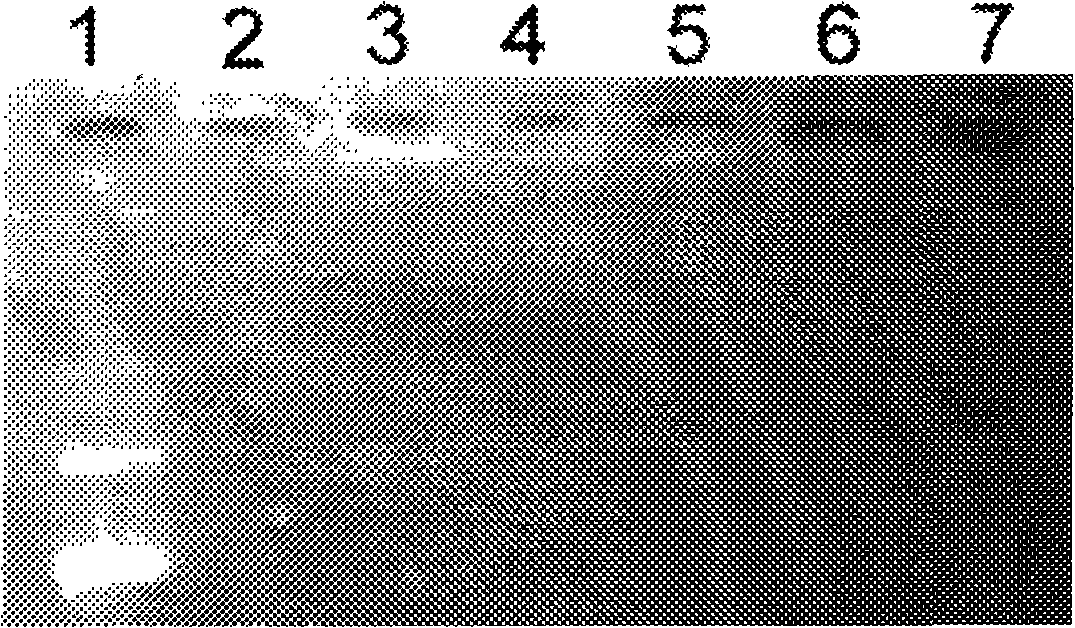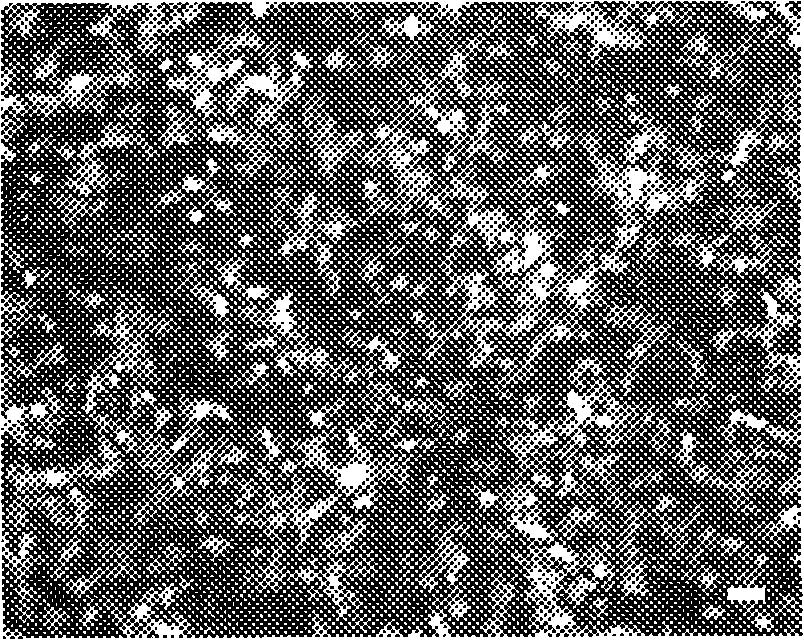Gene vector system containing targeted shading system, preparation and use thereof
A gene carrier and targeting ligand technology, applied in the biological field, can solve the problems of reduced transfection efficiency, cumbersome reactions, and difficult access to raw materials, and achieve high transfection efficiency, improved performance, and low cytotoxicity
- Summary
- Abstract
- Description
- Claims
- Application Information
AI Technical Summary
Problems solved by technology
Method used
Image
Examples
Embodiment 1
[0030] Example 1: Preparation of a shielding system with a targeting ligand
[0031] According to the feeding ratio described in Table 1, the molecular weight was 10 mg of hyaluronic acid of 1.3M, 1-(3-dimethylaminopropyl)-3-ethylcarbodiimide hydrochloride (EDC·HCl) and RGD The aqueous solution was mixed, and the pH of the reaction solution was adjusted to 4.75 with hydrochloric acid solution. The reaction was carried out at room temperature for 5 hours. After the reaction, the product was dialyzed against 3 liters of distilled water for 3 days and then freeze-dried to obtain a white flocculent product. The content of RGD in the product was calculated by NMR, and the results are shown in Table 1.
[0032] Table 1 Preparation table of hyaluronic acid masking system with RGD short peptide
[0033] product number
[0034] complex unit contains an RGD)
Embodiment 2
[0035] Embodiment 2: the preparation of the gene carrier system containing targeting shielding system
[0036]Take HA-RGD, add secondary water to dissolve, configure an aqueous solution with a concentration of 0.02-2 mg / mL, filter and sterilize with a microporous membrane with a pore size of 0.45 μm, and set aside. Take cationic polymer polyethyleneimine (PEI) and polyethyleneimine-polybenzyl glutamate (PEI-PBLG), add secondary water to dissolve, prepare an aqueous solution with a concentration of 0.02-2 mg / mL, and use a pore size of 0.45 μm microporous membrane filter to sterilize and set aside. Take the plasmid and dissolve it with secondary water to prepare an aqueous solution with a concentration of 0.02 mg / mL.
[0037] The cationic polymer aqueous solution and the plasmid aqueous solution of different concentrations are mixed in equal volumes to ensure that the mass ratio of the cationic polymer to the plasmid is 1:1. After the mixed aqueous solution of complex particle...
Embodiment 3
[0041] Example 3: Using gel electrophoresis to identify the stability of complex particles
[0042] Take 4 μL of 0.1 μg / μL DNA aqueous solution and 4 μL of 1 μg / μL polyethyleneimine-polybenzyl glutamate aqueous solution to complex, let it stand at room temperature for 10 minutes, then add 4 μL of different concentrations of HA aqueous solution, and detect the complex particle The stability of the masking system after addition. figure 1 The results of electrophoresis showed that adding 40 times of DNA to the hyaluronic acid shielding system would not destroy the complex formed by the cationic polymer and DNA.
PUM
 Login to View More
Login to View More Abstract
Description
Claims
Application Information
 Login to View More
Login to View More - R&D
- Intellectual Property
- Life Sciences
- Materials
- Tech Scout
- Unparalleled Data Quality
- Higher Quality Content
- 60% Fewer Hallucinations
Browse by: Latest US Patents, China's latest patents, Technical Efficacy Thesaurus, Application Domain, Technology Topic, Popular Technical Reports.
© 2025 PatSnap. All rights reserved.Legal|Privacy policy|Modern Slavery Act Transparency Statement|Sitemap|About US| Contact US: help@patsnap.com



